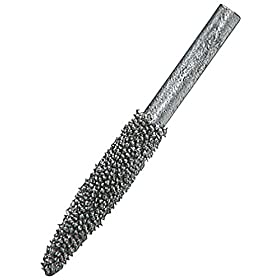Diffusion
“From a very little bit of flow bench testing I have done I found it quite surprising just how much improvment to flow can be had by a very slight softening of a square edge. There is much more to be gained in softening an edge where flow enters a duct from free space though than where it leaves a duct into free space.”
TW, this goes to my point about the diffusion of the flow caused by excessive chamfer on the transfer ports. As you mentioned, “there is much more to be gained in softening an edge where flow enters a duct from free space”. This rounding helps the flow bend around into the exhaust port. The converse applies for the transfers, that is, the transfer flow is allowed to bend around the transfer port as it exits.
If we concentrate too much on bulk flow, we can loose sight of the direction of the flow.
The Stihl cylinder is a case in point. The generous chamfers around the entire transfer port will tend to diffuse the flow on the edges. Granted, the bulk flow through the port could possibly be increased, but at what cost to mixing and short circuiting of the mixture.
If we milled the head of the jug, put a glass plate over the cylinder, installed a vacuum pump through the plate, we could watch smoke streams as they entered the cylinder. The generous chamfers should show diffusion around the ports. If the chamfers were tightened up to the edges of the ports we would see less diffusion.
However, in this case, we are seeing the cylinder in isolation – without the valve (the piston) in position. If we add the valve to the ports and move it to where the transfers are just cracking we would see even more diffusion. The piston would still be above the level of the actual port, but the chamfers would be exposed. The chamfers would direct the flow up into the departing exhaust gases and back towards the exhaust port itself. This results in mixing and short circuiting of the incoming fuel mixture.
Thus, on a transfer port we want to port the transfers for the desired direction of flow and to keep the chamfers to a minimum, essentially, just enough chamfer to accommodate the ring/s.






